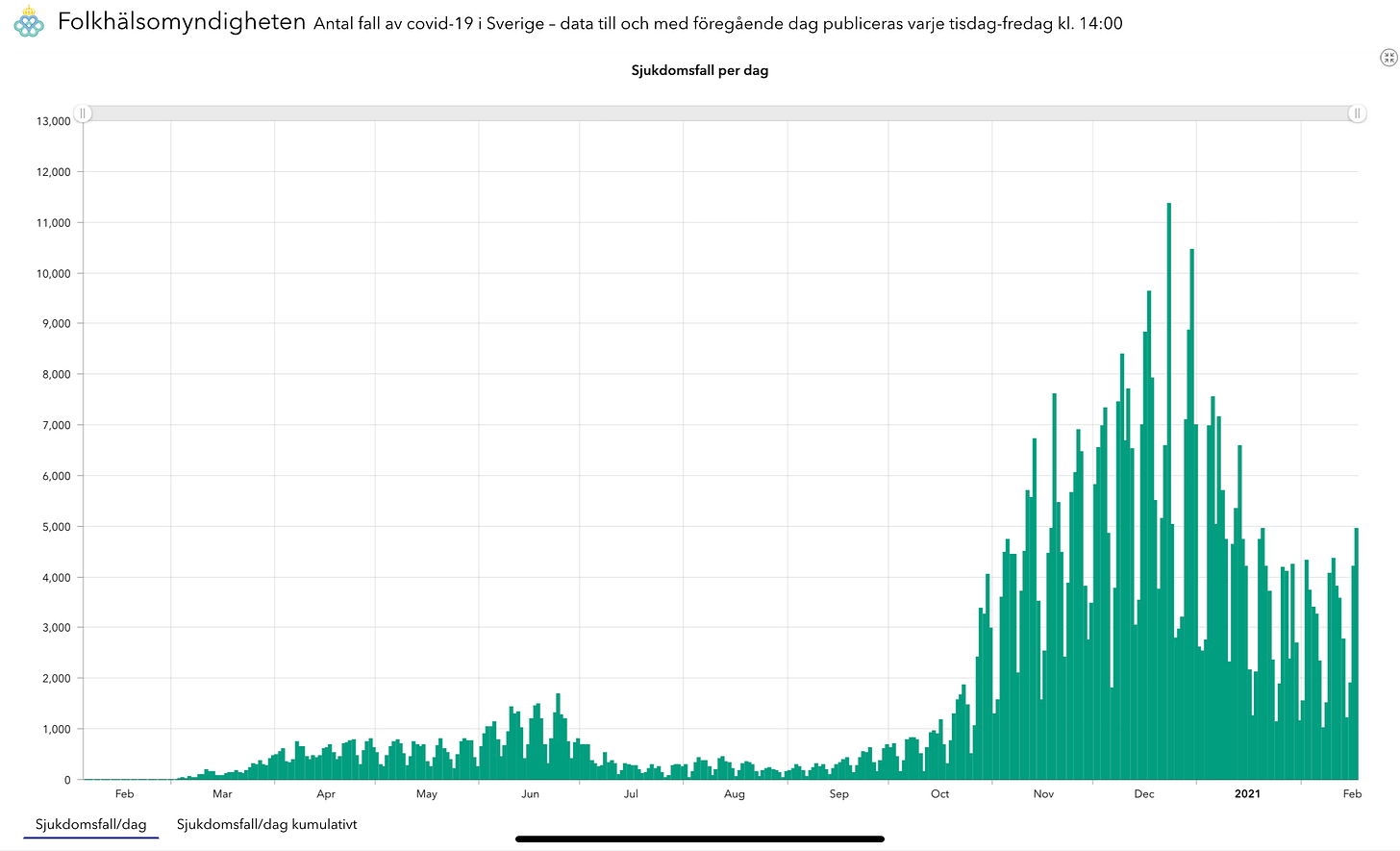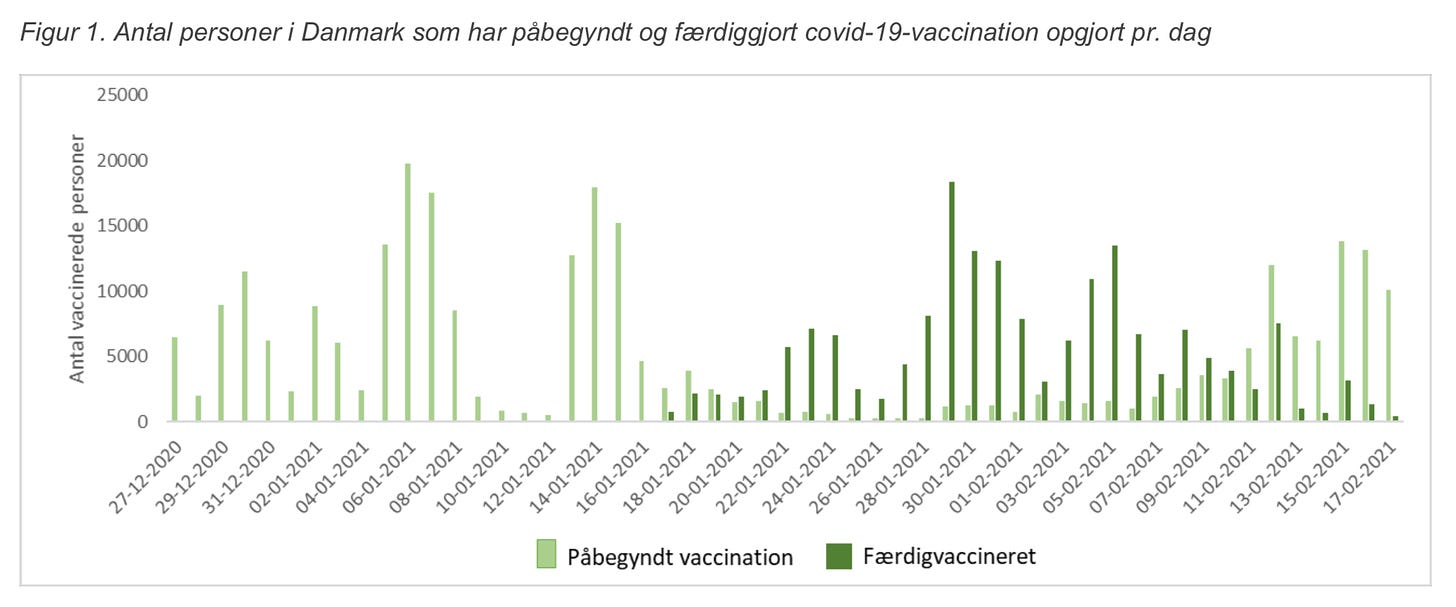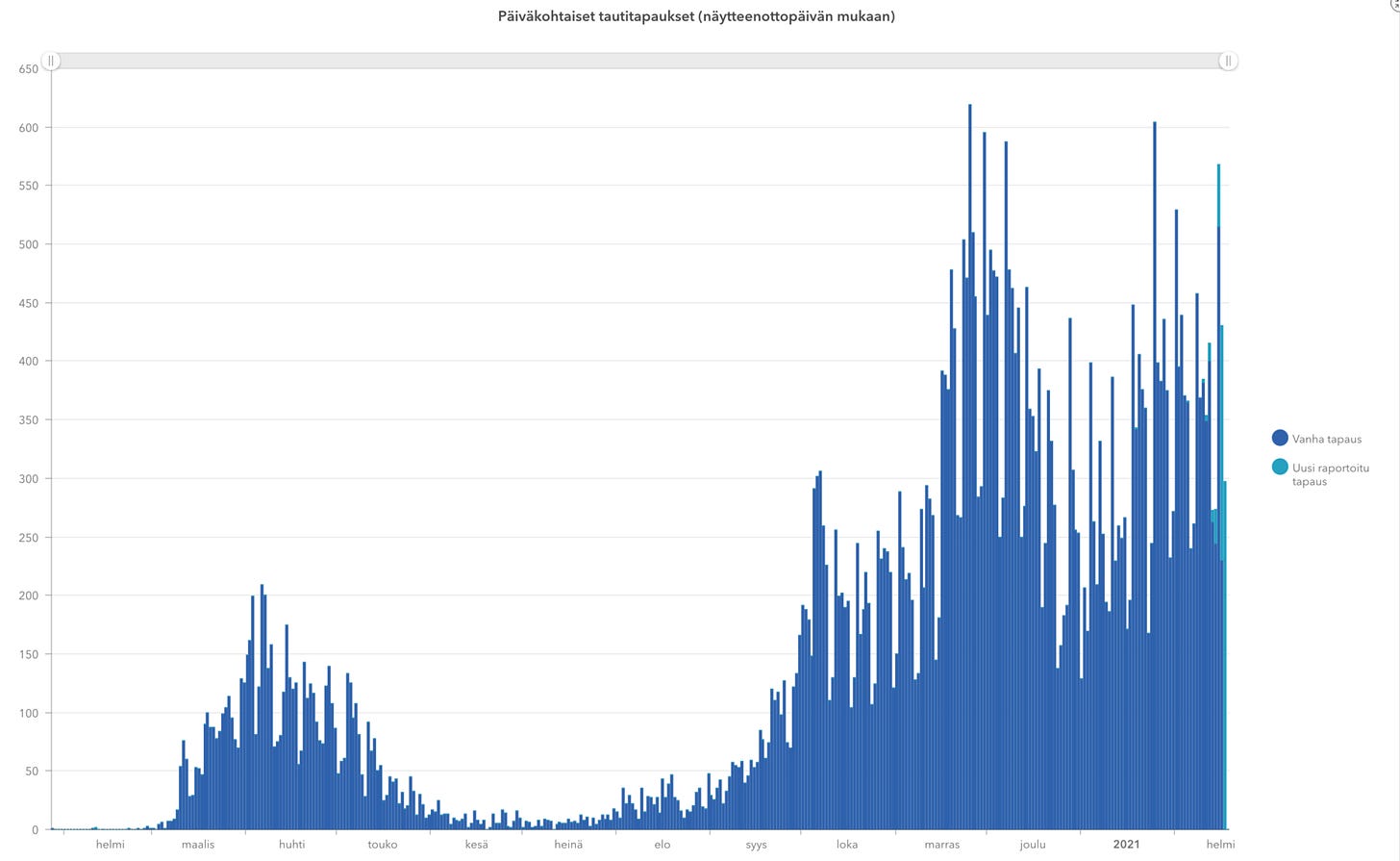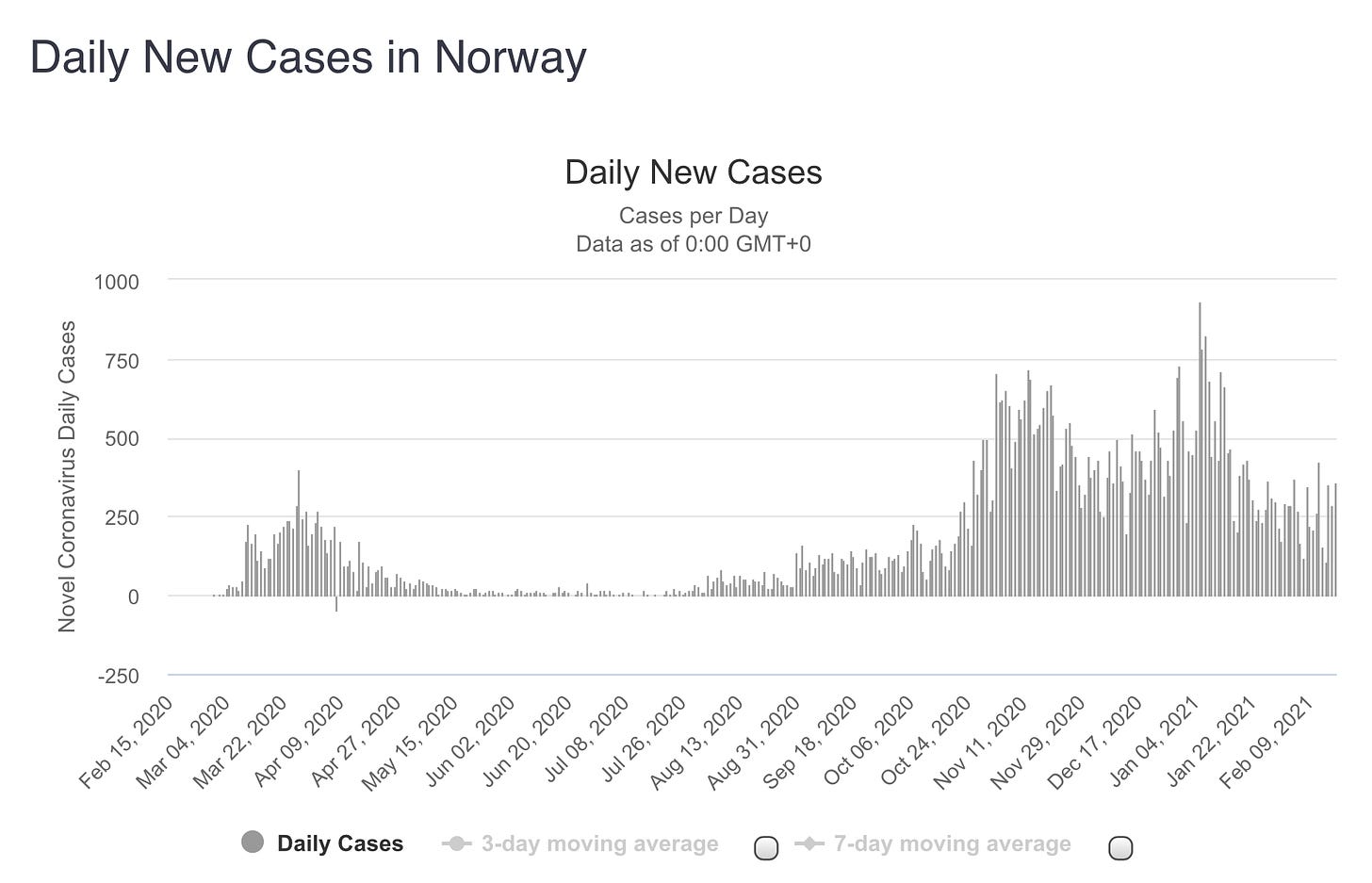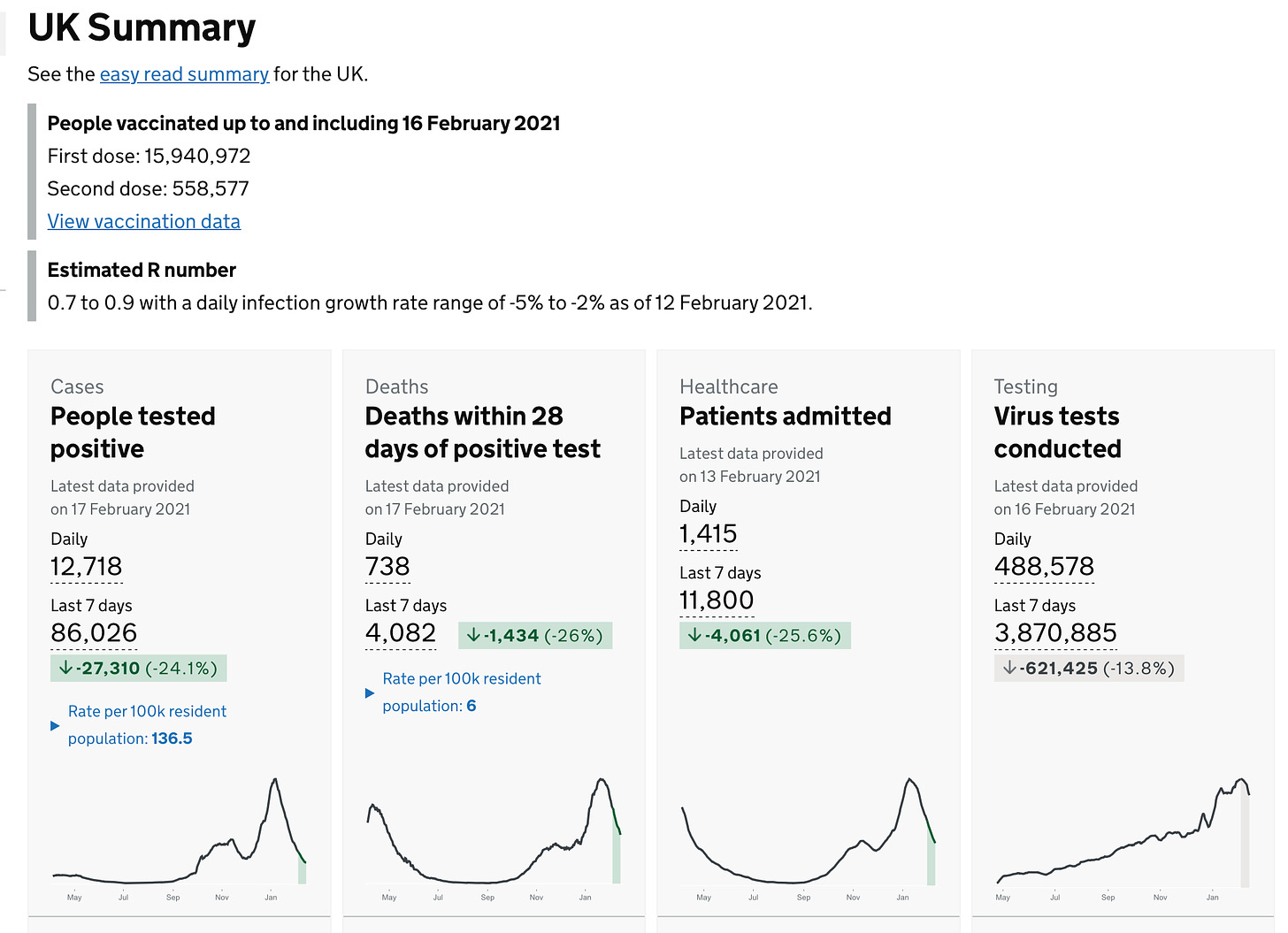🇸🇪
Sweden’s Chief Epidemiologist Anders Tegnell infamously told the Financial Time in the spring of 2020 that while there would be a second COVID wave in the fall his country’s controversial corona strategy would result in much lower infection numbers. He could not have been more wrong.
Sweden has seen exponentially higher COVID infections and deaths in its second infection wave. December has thus far been the deadliest month of the entire pandemic with two of the highest daily death tolls of the pandemic while daily infection numbers tripled and quadrupled the spring peak.
The sheer magnitude of the numbers, together with the King of Sweden calling the corona strategy “a failure” finally forced Sweden to ditch its liberal approach and adopt the restrictions it once disdained.
Now, just as it looked like it was finally turning a corner on its second wave of infections, numbers are once again increasing. Yesterday Sweden recorded 4,958 new infections, the highest daily infection numbers since mid-January.
The Local Sweden is reporting infections in Stockholm have shot up by 24.1% in the 2nd week of February as fears rise of a 3rd pandemic wave. Health officials in the city say people are not following public health guidelines.
The Swedish government is preparing to flex its newly passed legislative muscle to close all but essential businesses, a first for the country, in a bid to beat back rising infection numbers.
In Stockholm there are 266 people hospitalized with 39 in an ICU.
Infection rates are highest among those 18 to 49 years of age.
To date in Sverige 384,401 1st dose (4.7% of pop) and 168,842 (2.1% of pop) 2nd vaccine doses have been administered.
🇩🇰
Denmark’s Minister for Children and Education Pernille Rosenkrantz-Theil told DR that when secondary schools and universities reopen students must agree to the twice weekly testing mandate announced yesterday or they won’t be allowed to attend classes. The minister said students can be expelled for refusing to be tested “just like a workplace can, if an employee does not want to be tested.”
Denmark’s National Health Board says 82% of the country’s nursing home residents are now fully vaccinated with 90% having a 1st vaccine shot. As a result it says “the number of new infections and deaths in nursing homes has fallen significantly since the New Year.”
In the Southern Denmark Health Region, the second most populace of the country’s five health authorities, 90% of its nursing home residents are fully vaccinated. Another 25,810 doses of vaccine were delivered to the health authority this week. It says the 15,210 doses from Pfizer will go to vaccinating seniors receiving home care and seniors over 85 years old. 15,210 doses from AstraZeneca will go to inoculate care home workers, paramedics, police officers etc.
Denmark is reporting 468 COVID infections and three coronavirus deaths in the last 24 hours.
COVID hospitalizations (269) continue to drop (-11) ICU numbers (57) are unchanged while those on a ventilator (40) crept up (+1).
Yesterday 127,040 corona tests were administered. That equals a positivity percentage of 0.37%.
On the vaccination front there have been 273,981 1st doses administered (4.7% of population) and 173,259 people (2.97% of population) are fully vaccinated against the coronavirus.
Two schools and eight daycares in Kolding will remain closed next week due to a cluster of infections. It sounds like they will be closed for at least one week. Kolding has seen the second highest number of infections of any municipality in Denmark after Ishøj.
The Denmark National Health Board has updated recommendations for how to use COVID rapid tests. It recommends against people who have corona symptoms or anyone who has been in close contact with an infected person from using a rapid test. Instead it should be used a precautionary check for going to events, gatherings, and work places. The Health Board also now advises that any rapid test producing a positive result must be followed up with a PCR test as a double check.
🇫🇮
Yesterday Finland registered 614 infections and two more coronavirus deaths as infections continue to rise.
COVID hospitalizations (110) have increased (+8) ICU numbers (27) declined (-3).
To date 243,803 1st doses and 70,051 2nd vaccine doses have been administered.
🇮🇸
Norway has added 251 infections with no new corona deaths reported since yesterday’s update.
COVID hospitalizations (72) are up (+3) those on a ventilator (15) are down (-2).
To date 260,239 1st doses (4.85% of pop) and 82,889 2nd vaccine doses (1.54% of pop) have been administered.
United Kingdom
In the U.K. interim results of one of the largest COVID studies in the country provided a glimmer of hope. The REACT study found infections fell by more than two-thirds since its last interim report in January. The report concludes while infections are still very high, and hospitalizations remain higher than the country’s spring peak, lockdown restrictions are working. There are currently about 1,600 admissions per day. The study found new infections were most concentrated among those aged 5-12 and 18-24 years old. It also found large households, Asian ethnicity, and living in poorer neighborhoods were all associated with higher infection rates.. Health care and care home workers are still the two occupations with the highest infection risk. The study is testing and tracking 85,000 volunteers.
Great Britain reported 12,718 new infections and 738 corona deaths yesterday.
The rate of positive tests, fatalities, and hospitalizations continue to trend down.
On the vaccination front the U.K. is still roaring along, having administered almost 16 million to date. It remains the opposite story with second dose inoculations, which continue at a snail’s pace. Currently the gap between 1st and 2nd doses administered is over 15-million.
Europe
The pandemic situation is improving in Spain and Portugal, both considered COVID red zones. Spain reported 10,829 new infections and 337 new deaths yesterday. Portugal had 2,324 new virus infections and 127 deaths.
Corona infections jumped in the Czech Republic yesterday. Neighbouring Slovakia is also seeing elevated coronavirus numbers.
Germany is seeing its infection curve bend down but deaths, while declining, are still high.
Belgium continues to ward off any new infections surge.




